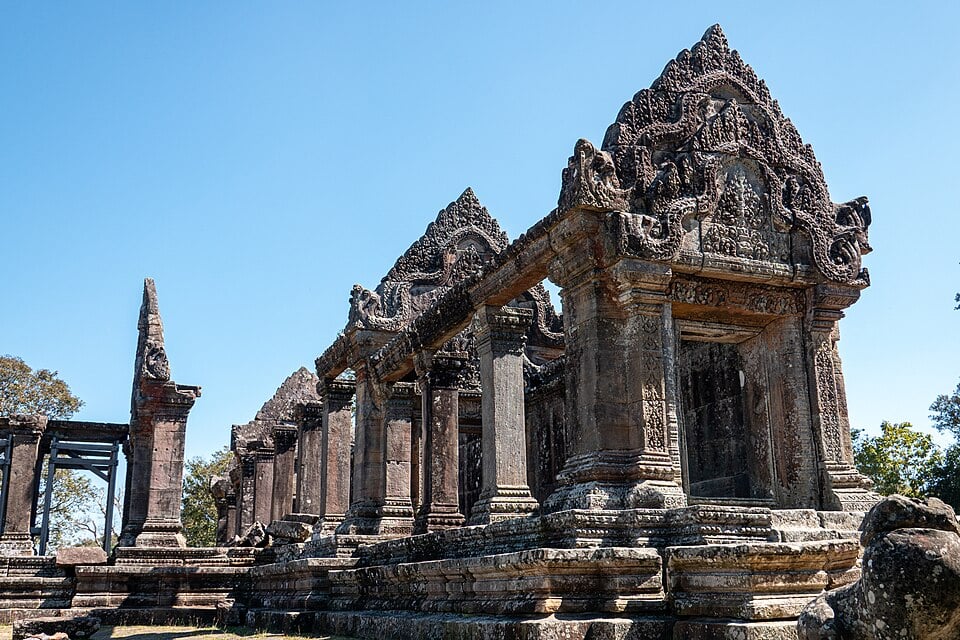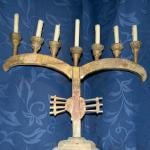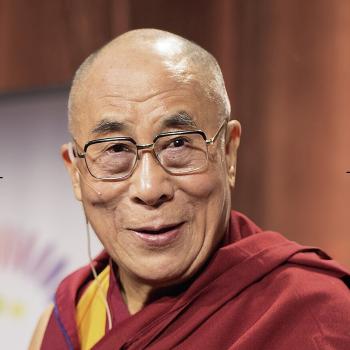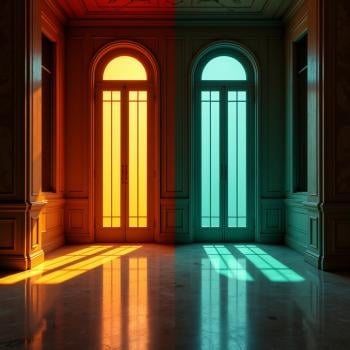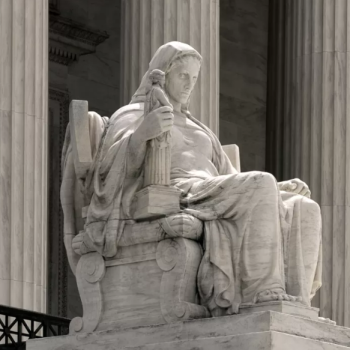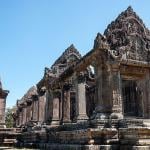Preah Vihear, also called Prasat Ta Muen Thom, is a Hindu temple complex at the heart of a long-standing border dispute between Cambodia and Thailand. The temple, which has long been in ruins, recently became news on April 24, when new fighting broke out over the old dispute. On April 26 U.S. President Donald Trump announced that he had persuaded the leaders of Thailand and Cambodia to begin ceasefire talks immediately. This announcement appears to have been premature, since robust fighting continued through Saturday and into Sunday. (Update: a cease-fire mediated by the Prime Minister of Malaysia was announced on Monday, July 28)
The border dispute goes back to 1907. At the time, Cambodia was a French protectorate, and Thailand was the independent kingdom of Siam. In 1907, France and Siam signed a treaty that addressed several disputes. The treaty also defined the border between Cambodia and Siam. Siam later contested the 1907 border, however, saying that the map drawn by French surveyors was inaccurate. It misplaced the watershed line that was supposed to be the natural boundary, Siam said. Siam’s view was that the map should have placed Preah Vihear inside Siam. Cambodia appealed to the United Nations’ International Court of Justice in 1959. In 1962 the ICJ ruled that the temple is in Cambodia. But Thailand continues to contest the 4.6 square kilometers of land around the temple and does not recognize the 1907 border. I have seen news stories that place the temple in Thailand and others that say it’s in Cambodia.
From a distance, this dispute over the ruins of a Hindu temple makes little sense. The populations of both Cambodia and Thailand are more than 90 percent Theravada Buddhist. Most of the remaining populations of both countries are Muslim. Hindus, Christians, probably a few Mahayana Buddhists, and practitioners of traditional folk religions are lumped together in the remaining tiny percentage labeled “other.” There hasn’t been a significant Hindu presence in the region for centuries, and I haven’t heard that any extant Hindu sect has the ties to Preah Vihear. It appears the reasons for the conflict have more to do with politics and nationalism than religion. But let’s look at the religious history anyway.
Hinduism in Southeast Asia
What we call Hinduism today is actually a family of diverse spiritual/philosophical traditions that trace their origins to the early Sanskrit scriptures called the Vedas. The Vedas came from a nomadic people sometimes identified as the “Aryans,” although they are more accurately called Indo-Europeans. (See “Who Were the Aryans” for more background.) These Indo-Europeans reached the Ganges River in India about 3,000 years ago and eventually spread throughout the Indian subcontinent. In India during the 1st millennium BCE they produced many of the treasures of the world’s religious literature. By the end of the 1st millennium BCE, Hinduism was spreading to places reached by trade routes far beyond India. Hinduism probably first reached the area now occupied by Thailand and Cambodia sometime in the 1st century CE. It was well established in the region by the 4th century.
Now we shift to the Khmer Empire, which lasted from 801 to 1431. The Khmer people are an ethnic group mostly associated with Cambodia, but there have long been significant numbers of Khmer in Thailand and Vietnam also. Likewise, the Khmer Empire, at its peak, was not confined to present-day Cambodia but took in a large part part of what is now Thailand and a sliver of Vietnam. The Khmer emperors are remembered today for their Hindu temple-building. These are sumptuous, ornate structures still beautiful today even in their ruined state. As with many of the historic cathedrals of Europe, construction of these temples often continued over a period of centuries. It’s believed construction of Preah Vihear began in the 9th century and was mostly completed in the late 11th century. The temple was dedicated to Shiva. It is somewhat older than the most famous Khmer temple, the celebrated Angkor Wat. Preah Vihear has been recognized as a UNESCO World Heritage site.
By the end of the Khmer Empire Hinduism was already being replaced by Buddhism in the region. Some of the Khmer temples, including Angkor Wat, were converted to Buddhist temples beginning in the 15th century. But it appears Preah Vihear was simply abandoned.
The Current Conflict Over Preah Vihear
Both sides are blaming the other for the current violence, which has killed more than 30 people and displaced about 200,000 as I write this. I’m not going to try to guess what happened. There are now plans for the two nations to meet in Malaysia on Monday, July 28. U.S. news media are giving credit to President Trump for this breakthrough, but if you keep reading you find that leaders of a number of other Asian countries — in particular Malaysian Prime Minister Anwar Ibrahim — were probably more directly involved. By the time you read this, perhaps the fighting will have stopped. Let’s hope.
The old temple, and the Khmer Civilization that created it, really are part of the cultural and historic heritage of both nations. It shouldn’t be impossible for Cambodians and Thais to share the place.
Update: See also “Thai monks refuse to evacuate as shells and F-16s fly overhead.”
